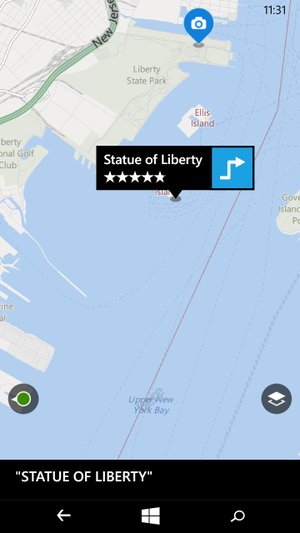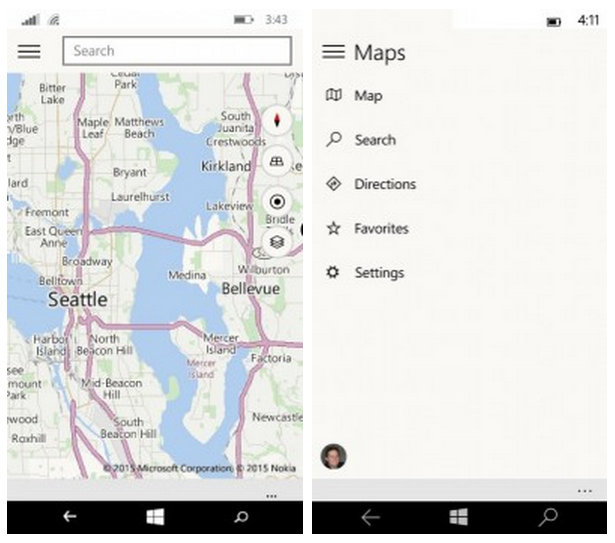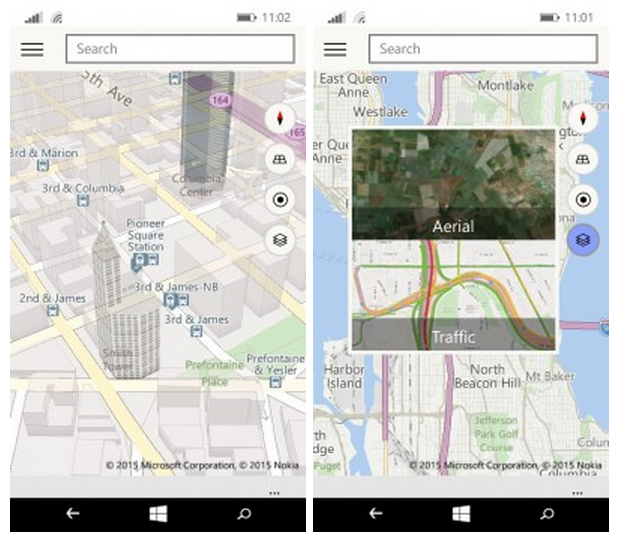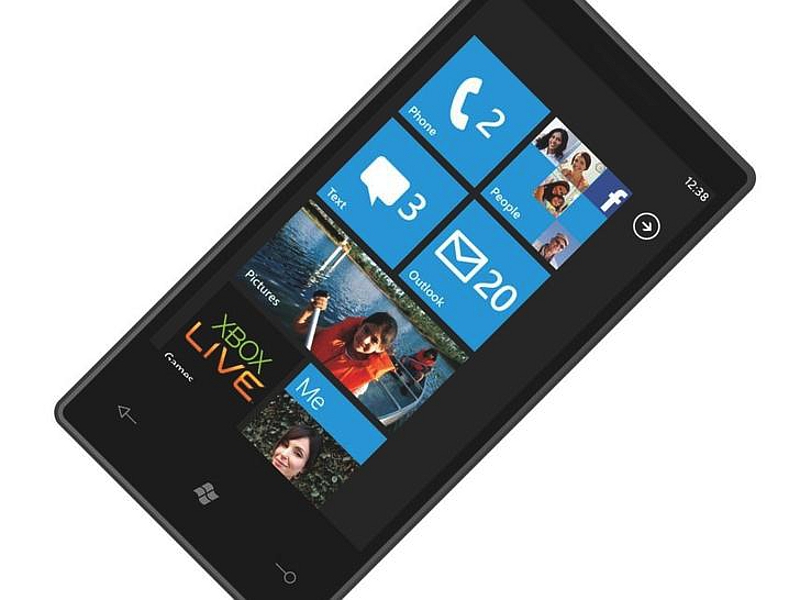Navigating Windows 10 Mobile With Or Without Nokia HERE
Recently, Nokia sold off its HERE maps to a coalition of German auto companies comprised of Audi AG, BMW Group and Daimler AG. The sale makes some sense given Nokia's radical reshaping of itself as a company, but one (admittedly small) segment of consumers were caught in the crossfire unawares: Windows Phone users.
Nokia's HERE transportation suite of apps have been the default navigational tools on Windows Phone for some time -- this, compared to Google Maps on Android and (the much-maligned) Apple Maps on iOS. The respective mapping apps on the three platforms were differentiators for users. For example, buying into Windows Phone meant you were buying into HERE and eschewing the popular Google Maps.
But with the HERE Maps and Drive+ in the hands of the Germans, what would become of maps and navigational tools on Windows Phone (which in short order will be known as "Windows 10 Mobile")?
HERE Today, Gone Tomorrow?
Microsoft told us that Windows Phone 8.1 apps will remain in the Store even after the upgrade to Windows 10 Mobile later this year, and thus, HERE Maps, Transit and Drive+ should remain available for faithful users.
However, there is some question as to what the Germans have planned for HERE -- they could keep the apps available and updated, or they could yank it from the Store and hoard it for their own auto platforms.
The HERE group replied to our inquiry about this issue with a statement that is both reassuring and also leaves some unanswered questions. In part, a representative told us, "The Consortium...has stated that it expects HERE also under new ownership to be open and continue to run on an independent basis." In other words, HERE is expected to remain supported and free to use, even under the consortium's ownership. Even better, the rep assured us, "We will continue to support our apps on Windows Phone (WP7/WP8/WP8.1) and will also ensure that they will be compatible with Windows 10."


This is excellent news for HERE fans, but it's also not a guarantee that many would be comfortable banking on. HERE is still under the umbrella of Nokia (pending the usual regulatory approval rigamarole, the sale of HERE to the consortium should close sometime in Q1 2016), so it's entirely possible that the new owners could change their minds. Then what?
Get Tom's Hardware's best news and in-depth reviews, straight to your inbox.
Universal Apps To The Rescue
Microsoft has made much of its new Universal Apps -- applications that will scale across all Windows-powered platforms and devices -- and indeed, the company confirmed to Tom's Hardware that Windows 10 Mobile will use the new Universal Maps app already found on Windows 10.
The HERE apps have been fine tools for Windows Phone users, but there's reason for optimism going forward -- the maps app for Windows 10 is promising.
Windows 10 Maps for Phones is already available in the technical preview, and to hear Microsoft tell it, the company pulled in the best parts of HERE and combined them with its Bing Maps technology.
"Maps offers you the features and tools you need to explore and navigate the world. This includes the best maps, aerial imagery, rich local search data, and voice guided navigation experiences from both Bing Maps and HERE maps, integrated together for the first time into a single app for Windows," read a Microsoft blog post from earlier this year.
A brief list of features includes:
-Pinch to zoom, two-finger rotate and the ability to tap a label to bring up detailed information on a location-Tap to zoom into your current location or switch to aerial imagery or local traffic data-One-tap search to find nearby eateries, hotels, shopping and the like-Rich details about a location you searched for-Turn-by-turn directions for driving, walking or public transit (optimized based on current traffic conditions or your preferred route)-Voice-guided navigation-Speed limit warnings and day/night modes-Offline map storage (a choice feature of HERE)-Favorites lists that follow you from device to device
Anecdotally, we've found the Maps application in Windows 10 on the desktop to be attractive and responsive. It's quite clear that the application is taking advantage of GPU acceleration. You can spin around the globe, zoom in as far as you want, and instantly have the maps and surface terrain rendered.
Everything loads rapidly, and with great detail. Even from afar, the terrain is visible, and you can make out different farm patches. There's even a 3D cities feature that covers most of the major cities in the U.S. and Canada, and many more cities from around the world, rendered in beautiful 3D images.
It remains to be seen if features such as the 3D images and 360-degree "streetside panoramas" will come to every handset. Microsoft told us that 3D images will at least be coming to some Windows 10 Mobile devices, but not others, because the experience on lower-end handsets would be less than ideal.
Lost In The Mix: Windows Phone 7 And Windows Phone 8 Devices
There's a final angle to this story that's important to keep in mind, which is that many older Windows Phone devices aren't getting the Windows 10 Mobile update. Microsoft has stated that “Windows 10 will start rolling out later this year and will be available for qualified Windows 8.1 phones,” meaning that older (not that much older) handsets won't be getting the new Maps app. As previously stated, HERE maps should remain available, updated and free for those users, but come Q1 2016 and the close of the HERE acquisition, there's no guarantee. In that case, a certain slice of Windows Phone users could be stuck using some other third-party Maps tool -- not the shiny new Windows 10 Universal Maps app, and not the tried-and-true HERE Maps.
(This is the part where someone makes a joke about how there are hardly any Windows Phone users in the first place, and the majority of existing Windows Phone users will get the Windows 10 Mobile bump, so who cares? And that's a fair point.)
HERE was, and is, a strong competitor in the mobile maps space, and it has been one of the selling points of the Windows Phone platform. It seems as though we'll have the HERE suite for the foreseeable future, whether you're on an older Windows Phone 7/8/8.1 device or have the (upcoming) Windows 10 Mobile upgrade.
But no matter; Microsoft has already moved on from HERE, headed somewhere new.
Seth Colaner is the News Director at Tom's Hardware. Follow him on Twitter @SethColaner. Follow us @tomshardware, on Facebook and on Google+.
Seth Colaner previously served as News Director at Tom's Hardware. He covered technology news, focusing on keyboards, virtual reality, and wearables.
-
Yaldenski Thank you very much for this article with good news for us Windows Phone users! We may be a minority but I and I'm sure most of my fellow Windows Phone users have been very happy with WP of which Here maps has been a very important part and hope to continue being at least as happy in the future. It's a shame that with all the FUD surrounding Windows on phones such re-assurance is necessary.Reply -
randomstar While I admit to being a minority user, as a windows phone user I have shown the platform to dozens of ( now ex apple and android ) others, and have found that they are generally much more satisfied with the change to Windows Phones. I hope to be able to continue, though I am quote disappointed with the lack of news with respect to new handsets for Verizon ( and others ) with windows Phone 10 support.Reply -
back_by_demand It's such a shame that any conversation about handsets or mobile OS eventually gravitates towards which carrier you are using. We have no such issues in the UK, we do have some carrier exclusives but they only last a few months or can be bypassed entirely by going through online vendors. You can have your phone and carrier combination of choice, such a shame the carriers have the USA by the balls, probably why Windows Phone does better in the UK. Google probably slushing large amounts of cash to the carriers to stock the bare minimum of non-Android handsets.Reply -
PoohGQ I still don't have Here! on my Windows 10 Mobile install on my Lumia 925. Also, the Microsoft alternative for Here! apps is still lacking a Transit app replacement.Reply -
ohim Personally i don`t think Audi/BMW/Mercedes will pull the support from windows phone. I like the app on my phone but it`s lacking a simple option that was present on Google maps, the ability to point on a place and make a route there, you can`t do this on Here maps, you have to push in a street name.Reply
The maps are good with streets but they are lacking in places, for instance on the Romanian shore there is no info on beach names and their locations, or important.
I`m a new windows phone user and i`m still amazed on how much better the OS is than android. The phone is lacking some apps but hopefully with win 10 they will all come to this platform.
Google is making a bad move from my point of view for now since they don`t want to support this platform. I switched in the past from Yahoo to Google, i can switch now from Google to Outlook and other maps...
I don`t believe in brand loyalty and i think it`s stupid. -
Onyx108 I think it is pretty straight forward which phones will get the Win 10M update. On Microsoft's WP update availability page it says that you will need to have the Denim version 8.10.14219.341 or higher to get ready to update to Win 10M. That leads me to assume that any phones that don't already have that update aren't getting Win 10M.Reply
http://www.microsoft.com/en/mobile/support/software-update/wp8-software-update/



